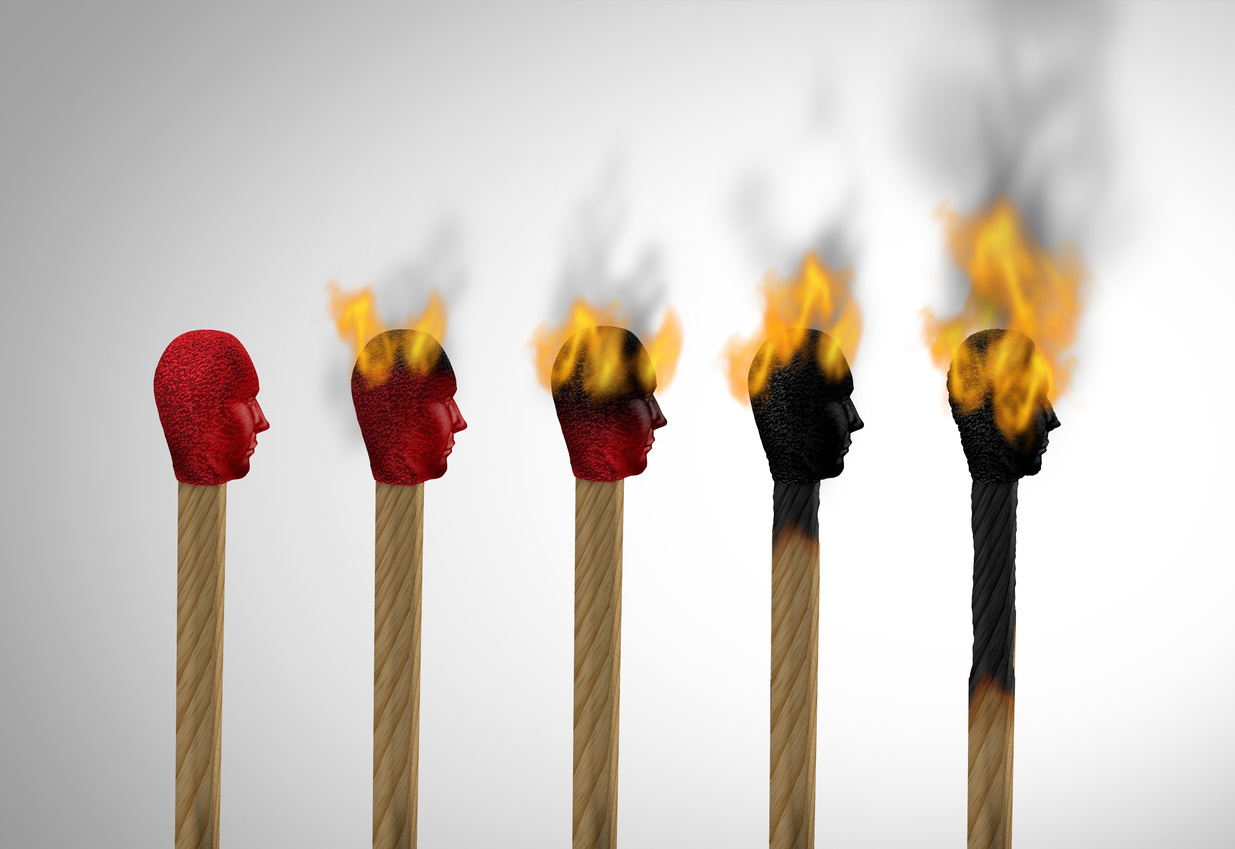Leading Through Burnout

Leadership is hard
Like, really hard. As leaders we take on the responsibility and accountability of the performance of our organizations and often do it in a way that protects our teams from the feeling of that pressure. Some days we do it well, others not as well. It can be incredibly isolating and lonely at times of stress. However, it is all too common that leaders feel like they aren’t allowed to say out aloud the impacts this isolation and burnout is having on us. We feel alone. You are not alone. Nearly 70% of senior leaders say burnout affects their ability to make decisions [i]. 41% of senior leaders are stressed and 36% are exhausted[ii]. Fully 69% of executives are thinking about quitting because of their wellbeing[iii], and more than 80% of senior leaders report a level of exhaustion typical of burnout risk[iv].
And it’s even worse for women. 89% of women leaders report exhaustion compared to 75% of men[v].
This is, in fact, so common that you are more likely to find a leader in the same stage of burnout as you are to have an empty inbox on Friday afternoon.
So, what do we do about it? Well, there are some people on LinkedIn and Twitter who tell you they have the perfect way to balance everything and find energy in the little things. Remember, LinkedIn is like every other social media channel, people put their best versions forward, not their real ones. Therefore, take the snippets of advice, but don’t presume that you are alone because we all know that you aren’t. However, nothing about how we feel exists in a binary form of 1’s and 0’s. It is not isolated or not isolated. It is degrees of isolation. Degrees of burnout. Which means tip number 1 is be kind to yourself and set realistic targets. Start small and make incremental movements towards self-care that enable you to reduce the impact of burnout.
Find the Glimmers.
One of my favorite pieces of advice recently was about glimmers. Glimmers are the opposite of triggers. For me, my biggest trigger is fairness. So, if someone takes my time away from me for themselves, I get proper grumpy. I feel out of control, and anxious. However, if I looked for the glimmer, it would be that I am needed. I am safe. I am valued.

The Japanese Concept of Ikigai.
Ikigai is a concept from Japanese society that is about finding your purpose and balancing time across the things you NEED, the things you LOVE, the things you’re GOOD AT, and the things you’re PAID FOR.

Some ways to implement Ikigai in your life:
- Align your work and life with your ikigai by making changes that bring you closer to your ideal state of fulfillment and happiness.
- Share your ikigai with others by inspiring them with your vision, values, and goals, and supporting them in finding their own ikigai.
- Keep learning and growing from your ikigai by seeking feedback, challenges, and opportunities that help you improve your skills, knowledge, and impact.
Being kinder to yourself.

This cartoon says it all, really. When we are under pressure our stress stimulators expand and exacerbate all the things we feel. It’s why we scream at a sports match, and it’s why we cry into our coffee when your colleague doesn’t reply to that important Slack message you sent them (or is that just me?). The art of being kind to yourself seems fluffy, but you can actually make it a habit. When in a high stress moment, change your environment. Go for a walk, go get a coffee, go sit on a different floor of the building. Once there, stop and reflect and ask yourself for evidence. What is the evidence surrounding your worry or self-doubt. What are the facts and do they back up or disprove the emotive response. Once you know, you can react better. Most of the time, the evidence disproves the feeling and you can move on more effectively. Don’t skip the change of environment bit. When in a different environment our brain patterns change. We are more likely to be objective and creative.
However, don’t just change your negative emotional habits, change the positive ones too. Allow yourself to feel pride, to feel joy, to feel content. You have earned all of those and ignoring them is doing an injustice to all the effort you put in!
The old “setting boundaries” technique.
Another major cause of burnout is unsustainable workload. Leaders often have multiple responsibilities and demands on their time and energy. They may feel pressured to work long hours, take on more tasks, or be available 24/7. However, this is obviously not sustainable and will lead to exhaustion, reduced productivity, and diminished quality of work. As leaders, we need to prioritize our tasks, delegate when possible, and set realistic expectations for ourselves and others. To do that, we need to get better at the scary-as-heck behavior of setting boundaries between work and personal life and everything in-between. A study by ThriveMyWay found that employees are 32% less likely to experience burnout when leadership assists them in managing their workload.
Screw the rules.
There is so much we have wrong about leadership that we are all taught in schools, at work, in movies. My biggest gripe with those “ways we do things around here” is the expectation that senior leaders should be able to handle stress and pressure without showing any signs of weakness or vulnerability. Rubbish. Be vulnerable. Ask for help. Share the challenges you’re facing, and encourage team members to talk through and share the challenges they are facing so you can process them as a team. According to a Harvard Business Review article, leaders who show vulnerability are more effective in guiding their organizations through uncertain times than those who display bravado[vi]
In the end, it’s down to you.
Leadership is a demanding and rewarding role, but it can also be a lonely and stressful one. Especially in times of crisis, leaders may feel isolated from their peers, their teams, and their organizations. They may also experience burnout, a state of physical, emotional, and mental exhaustion caused by chronic workplace stress. However, if we are kind to ourselves and implement little nudges to our days and rhythm, we can at least partially overcome these negative influences on our life, and get a little bit closer to our Ikigai.
[i] Nearly 70% of senior leaders say burnout affects their ability to make decisions
[ii] 41% of senior leaders are stressed and 36% are exhausted
[iii] Fully 69% of executives are thinking about quitting because of their wellbeing
[iv] More than 80% of senior leaders report a level of exhaustion typical of burnout risk
[v] Across 89% of women and 75% of men leaders, exhaustion was reported
[vi] Today’s Leaders Need Vulnerability, Not Bravado (hbr.org)

